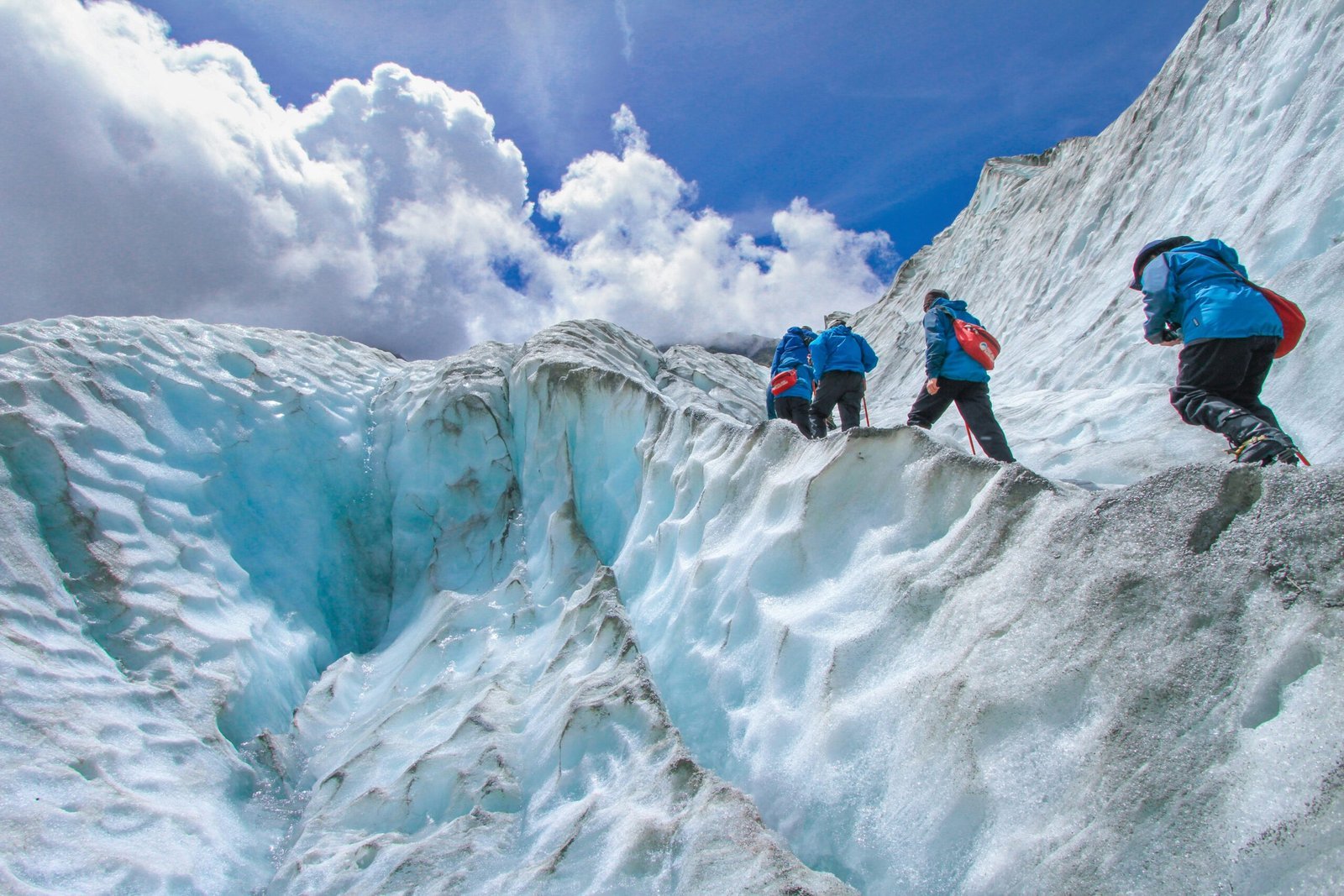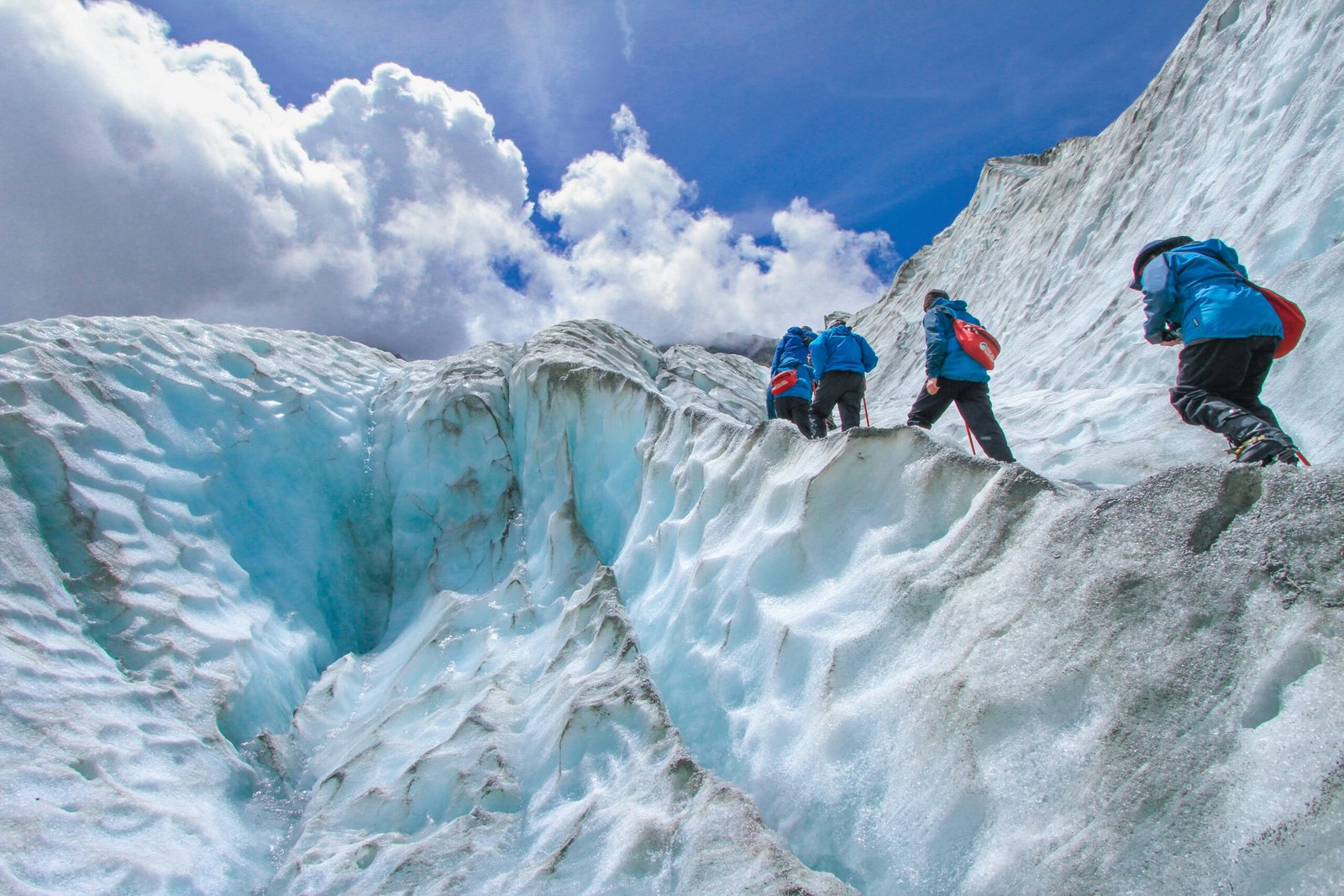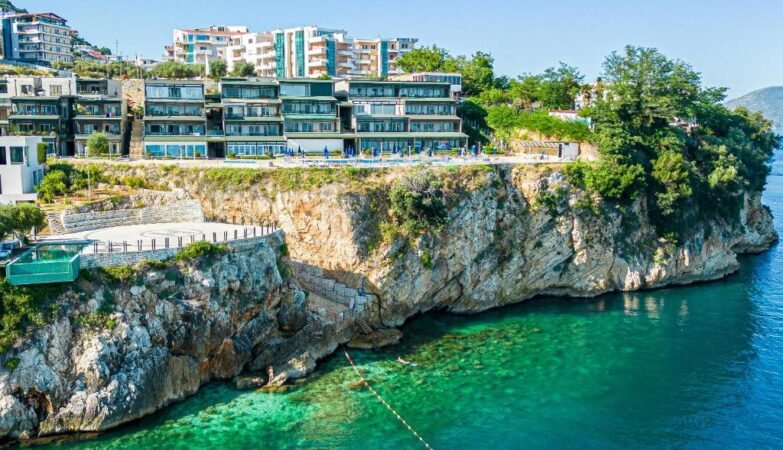
Introduction to Ice Climbing in Banff
Ice climbing is an exhilarating adventure sport that captivates many outdoor enthusiasts, particularly within the stunning landscapes of Banff National Park in Canada. This unique form of climbing involves ascending frozen waterfalls, steep ice faces, and glacial formations, which present both challenges and rewards to climbers of varying skill levels. Banff National Park, designated a UNESCO World Heritage Site, is renowned for its diverse terrains and breathtaking natural beauty, making it an ideal destination for those seeking thrilling ice climbing experiences.
The park’s ice climbing season typically runs from late December to early March, when cold temperatures create optimal conditions for the formation of ice. The striking frozen waterfalls, often cascading dramatically from cliffs, draw experienced climbers and novices alike, all eager to embrace the exhilaration that ice climbing provides. Participants are often enchanted by the glistening ice structures that form as a result of the park’s unique weather patterns, which contribute to the numerous climbing routes available.
One of the most appealing aspects of ice climbing in Banff is the opportunity for climbers to engage with the environment in an immersive way. Many climbers appreciate the serenity and tranquility of the snowy landscapes, juxtaposed with the adrenaline of ascent. Moreover, local guiding companies offer a range of services, ensuring that climbers, whether seasoned or beginners, receive the necessary instruction and support to navigate these icy terrains safely.
With the perfect blend of stunning scenery, varied climbing routes, and the thrill of overcoming natural challenges, ice climbing in Banff National Park stands as a prominent adventure sport that attracts climbers from across the globe. As individuals embark on this incredible journey, they not only test their physical limits but also forge lasting memories in one of Canada’s most picturesque national parks.
Best Times to Ice Climb in Banff
When considering ice climbing in Banff National Park, timing plays a crucial role in ensuring a safe and enjoyable adventure. The winter months, from December to March, are typically regarded as the best times to engage in ice climbing activities. During this period, temperatures consistently drop, leading to optimal ice formation on the various climbing routes scattered throughout the park. Early winter often brings fresh ice, providing an ideal opportunity for climbers of varying skill levels to explore the well-formed ice structures.
Ice conditions are heavily influenced by temperature fluctuations and weather patterns. A consistent cold snap is essential for solid ice when planning an expedition. Climbers should anticipate temperatures ranging from -5°C to -20°C (23°F to -4°F), which usually prevails during these months. Warmer periods within the winter, especially in late winter, can result in softer ice, making climbing more challenging and potentially dangerous. Therefore, monitoring weather forecasts and ice reports is vital to determine the safest and most suitable days for climbing.
Safety should always be a priority when planning any ice climbing expedition. As the ice develops over the season, its thickness and reliability can change. Early in the season, climbers might find that some routes are less stable, whereas by mid-winter, ice conditions are typically more reliable. Additionally, factors such as avalanche risks and local wildlife considerations should be factored into any expedition plan. Proper gear and knowledge of the routes, alongside an understanding of current ice conditions, enhance the chances of a successful ice climbing experience in Banff National Park.
Essential Gear for Ice Climbing
Embarking on an ice climbing expedition in Canada’s Banff National Park necessitates a thorough understanding of the essential gear required to ensure safety and enhance performance. Central to this adventure are crampons, which are specialized spikes worn on footwear to provide traction on icy surfaces. Choosing the right crampons, tailored to one’s climbing style and the specific ice conditions encountered, can significantly impact the ascent’s success.
Equally vital are ice axes, the tools wielded for both upward movement and self-arrest in case of a fall. There are various types of ice axes available, including general-purpose axes for beginners and technical axes designed for more challenging climbs. Selecting an appropriate ice axe based on the difficulty level of the climb is crucial for effective navigation on vertical ice formations.
Safety should never be overlooked while ice climbing; hence, a helmet is essential to protect against icefalls or rock debris. It’s advisable to invest in a properly fitting, lightweight helmet designed specifically for climbing activities to ensure maximum comfort and protection.
In addition to these primary tools, climbers should also consider other gear such as harnesses, belay devices, and carabiners, which play a significant role in enhancing safety during ascents and descents. These devices facilitate smooth transitions and secure connections when moving on ice. Furthermore, specialized gloves and apparel made of moisture-wicking materials significantly contribute to maintaining warmth and comfort in frigid temperatures while climbing.
Ultimately, proper clothing, including base layers, insulation layers, and waterproof outer shells, is crucial for protecting climbers from extreme weather conditions. Layering allows for flexibility and comfort while ensuring climbers remain prepared for the often unpredictable environment of Banff National Park.
Popular Ice Climbing Routes and Locations
Banff National Park is renowned for its diverse terrain and stunning ice climbing locations that attract both novice and experienced climbers. Among the most celebrated routes is the Stanley Headwall, known for its striking vertical walls and impressive frozen waterfalls. This route offers a challenging experience, featuring steep ice grades that can range from low to medium difficulty. Climbers tackling the Stanley Headwall are rewarded with breathtaking views and unique ice formations, making it a must-visit for any ice climbing enthusiast.
The Grotto is another prominent ice climbing location within Banff National Park, popular for its accessibility and varied ice climbing opportunities. This site features a combination of mixed routes, offering climbers the chance to navigate both ice and rock. The Grotto is well-suited for those who may be new to ice climbing, with routes that cater to a range of skill levels. The formations here can be quite intricate, providing climbers with the chance to experience different ice textures and conditions, enhancing their climbing techniques.
In addition to Stanley Headwall and The Grotto, the park is home to several other notable ice climbing routes. The Widowmaker, for instance, presents a technical challenge for advanced climbers with its overhanging ice formations and unpredictable conditions. Ordinarily, this route demands a high level of skill and experience due to the complexity of the ice. Another location, the Bow Falls area, offers various routes that appeal to beginners and intermediates, featuring gentler slopes and more forgiving ice types.
As climbers explore these routes, they can expect varying ice formations from smooth, cascading flows to steep, rugged cliffs. This diversity in locations not only makes Banff National Park a climbing paradise but also enhances the experience for adventurers keen on exploring the beauty and challenges of ice climbing amidst stunning natural scenery.
Guided Ice Climbing Tours vs. Solo Climbing
Ice climbing in Canada’s Banff National Park offers a thrilling experience, yet deciding between guided tours and solo climbing requires careful consideration. One of the primary advantages of guided ice climbing tours is the emphasis on safety. Experienced guides are well-versed in the terrain and understand how to navigate the inherent risks associated with ice climbing. They provide essential instruction, equipment, and real-time support, significantly enhancing the climber’s safety and enjoyment. In contrast, those who choose to climb independently must ensure they possess adequate knowledge of safety protocols, ice conditions, and the proper use of climbing gear. This can prove challenging for those lacking experience or unfamiliar with the specific ice formations found in Banff.
Accessibility is another critical factor when comparing guided tours with solo climbing. Guided tours often cater to varying skill levels, making this a viable option for beginners who may not yet have the confidence or technical skills required for independent climbing. Tour groups often cover transportation, equipment rental, and instructional sessions, streamlining the climber’s experience. Solo climbing, on the other hand, requires a climber to manage these logistics independently, which could be cumbersome for those without established networks in the climbing community or without local knowledge.
When assessing skill level, guided tours offer tailored experiences, optionally focusing on learning new techniques or improving existing skills under professional supervision. For more experienced climbers seeking adventure, solo climbing may provide the flexibility to explore uncharted areas at a personal pace. However, it is essential to recognize the importance of possessing adequate skills before embarking on such independent expeditions. Ultimately, both guided tours and solo climbing present unique benefits and challenges, and potential climbers should carefully evaluate their experience, goals, and preferences before making a decision.
Safety Measures and Precautions
When embarking on an ice climbing expedition in Banff National Park, understanding and implementing safety measures is paramount to ensuring a safe and enjoyable experience. The unpredictable nature of ice climbing necessitates continuous awareness of various factors that can affect one’s safety, starting with an evaluation of ice conditions. Climbers must assess the quality and stability of the ice, as conditions can change rapidly. It is advisable to consult current reports and local guides, who possess extensive knowledge of the area’s ice formations and potential hazards.
In addition to assessing ice conditions, conducting thorough equipment checks before starting the climb is essential. This includes inspecting harnesses, ropes, crampons, and ice axes to ensure they are in good working order and free from defects. Using well-maintained gear not only enhances climbers’ safety but also instills confidence while navigating challenging terrains. Furthermore, climbers should familiarize themselves with their equipment, understanding its use and limitations.
Moreover, emergency protocols must be established and discussed among team members prior to the climb. This encompasses identifying potential risks and outlining actions in the event of an accident or sudden ice fall. It is advisable to carry a first aid kit, a whistle, and a means of communication, such as a satellite phone or radio, to ensure prompt assistance if needed.
Lastly, climbers should remain vigilant in monitoring weather changes throughout their expedition. Sudden temperature fluctuations can lead to dangerous ice conditions, increasing the risk of avalanches or ice collapse. By staying informed and responsive to weather updates, climbers can make informed decisions about whether to proceed or abort the climb. Prioritizing these safety measures can contribute to a successful and memorable ice climbing adventure in Banff National Park.
Environmental Considerations and Conservation Efforts
Ice climbing in Banff National Park provides climbers with breathtaking views and thrilling experiences; however, it also poses significant environmental challenges. The fragile ecosystems existing within the park’s icy landscapes require attentive stewardship to ensure their preservation for future generations. The act of ice climbing itself can disrupt local wildlife, damage vegetation, and contribute to soil erosion. As adventurers navigate these pristine areas, it is imperative that they remain mindful of their impact on the environment.
In response to these concerns, Banff National Park encourages all visitors, particularly ice climbers, to adhere to the Leave No Trace principles. This framework emphasizes the importance of minimizing human impacts on nature. Climber education regarding the appropriate trail usage, waste disposal, and the understanding of wildlife habitats is critical. By following these guidelines, climbers can enhance their own experiences while simultaneously protecting the park’s unique ecosystems.
Additionally, local authorities and conservation organizations undertake various efforts to balance recreational activities with environmental protection. This includes the establishment of designated climbing areas and seasonal closures to safeguard critical habitats during sensitive life-cycle stages of wildlife. By working with climbers and guiding services, park officials strive to create a sustainable environment that accommodates both recreation and conservation.
Moreover, ongoing research initiatives monitor the ecological balance within Banff National Park and assess the impact of ice climbing activities. By investing in scientific studies and community engagement, these efforts are pivotal in informing policies that effectively preserve the park’s natural beauty. Protecting the delicate ice formations and the species that inhabit these regions is essential for ecological integrity and the enjoyment of future climbers.
Experiencing the Banff Ice Climbing Community
The ice climbing community in Banff National Park is renowned for its vibrancy and inclusiveness, providing climbers of all levels with opportunities to connect, learn, and grow in their skills. Local climbing groups play a critical role in fostering this sense of camaraderie, organizing regular meet-ups and training sessions that cater to both beginners and seasoned climbers. These gatherings not only enhance the participants’ technical skills in ice climbing but also serve as an excellent platform for climbers to share experiences and build friendships.
Throughout the winter months, the Banff ice climbing community hosts various events and competitions. These activities range from informal climbing challenges to more structured contests, allowing athletes to showcase their skills in a competitive environment. Events such as the Banff Ice Climbing Festival are immensely popular, drawing participants from various regions. The festival features workshops, gear demonstrations, and after-hours social events that help integrate both visitors and locals, promoting a strong network among climbers.
For those who are new to the sport or looking to refine their abilities, several climbing schools and guides in Banff offer educational programs. These institutes often collaborate with local climbing associations to provide comprehensive training, ensuring a safe and rewarding experience. Such partnerships highlight the community’s commitment to maintaining high standards of safety and skill development within the sport.
Moreover, the ice climbing community in Banff is actively engaged in sustainability efforts. Many climbing organizations focus on minimizing the environmental impact of climbing activities, promoting responsible practices, and ensuring the preservation of natural resources. This commitment not only benefits the landscape but also inspires climbers to respect and cherish the stunning surroundings that make Banff a premier ice climbing destination.
Conclusion
Embarking on an ice climbing expedition in Banff National Park is a unique adventure that promises not only physical challenge but also breathtaking experiences. The ethereal beauty of frozen waterfalls and towering ice formations creates a stunning backdrop that captivates climbers of all skill levels. Whether you are a seasoned climber or a beginner, Banff offers well-structured programs that make this thrilling sport accessible and enjoyable. As you navigate the icy walls, the raw nature surrounding you provides an invigorating escape from everyday life.
The thrill of ice climbing is amplified by the sense of accomplishment that accompanies reaching the summit. Each ascent presents an opportunity to connect with nature on a profound level, witnessing the majestic Canadian Rockies from an exhilarating perspective. The camaraderie built among fellow adventurers further enriches the experience, resulting in lasting friendships and shared memories that transcend the climb itself. This sense of community is one of the many aspects that makes ice climbing in Banff an unforgettable venture.
Every time you conquer a challenging route or simply immerse yourself in the calm of a winter landscape, you are creating stories that you will cherish for years to come. The allure of ice climbing is not merely about scaling ice; it’s about embracing the adventure, nurturing a spirit of exploration, and appreciating the spectacular beauty that nature has to offer. Therefore, for those seeking an extraordinary experience that combines thrill and tranquility, ice climbing in Banff National Park beckons. It is indeed an adventure worth pursuing, filled with incredible vistas and unparalleled moments in one of Canada’s most iconic landscapes.




